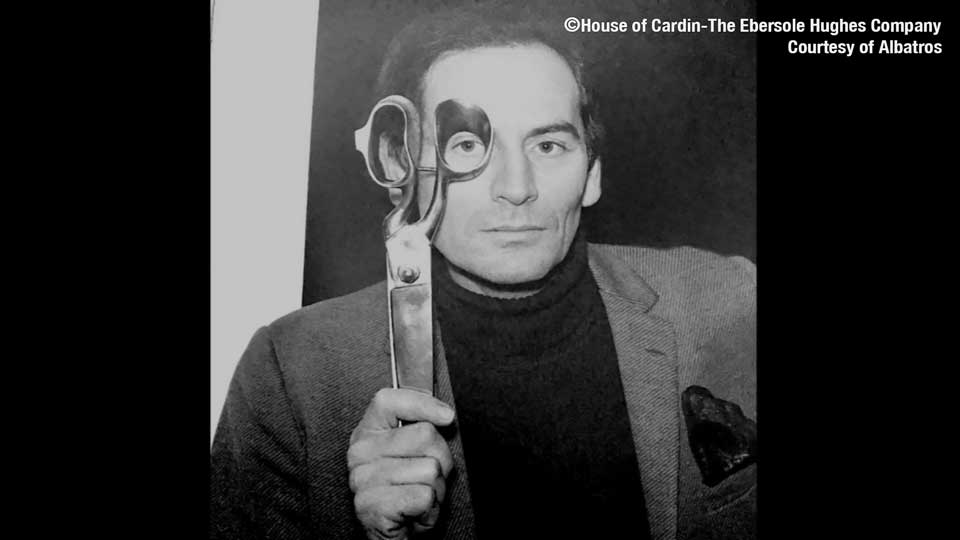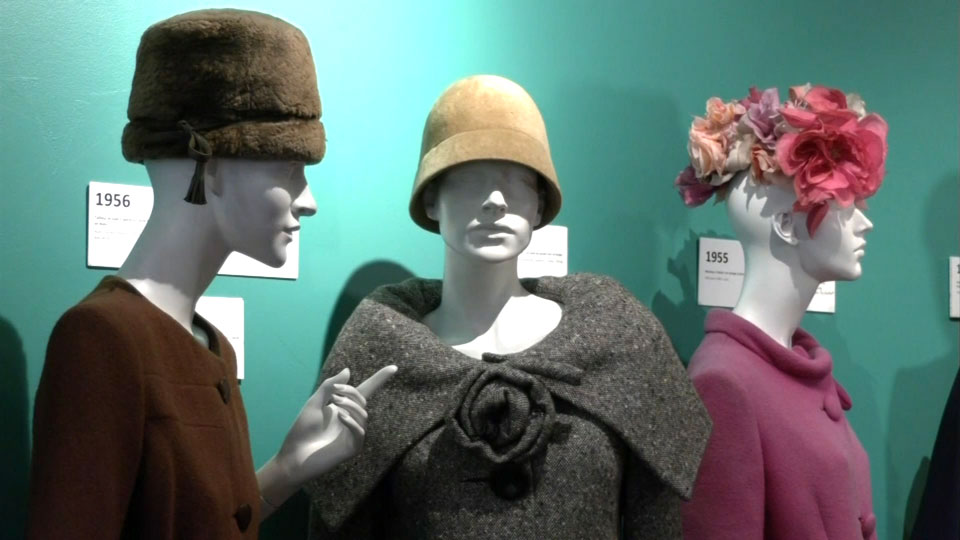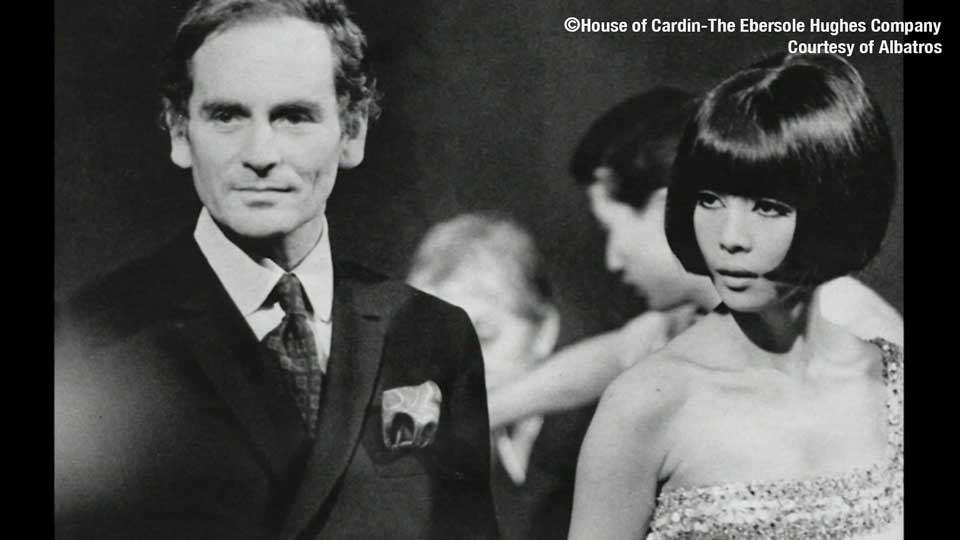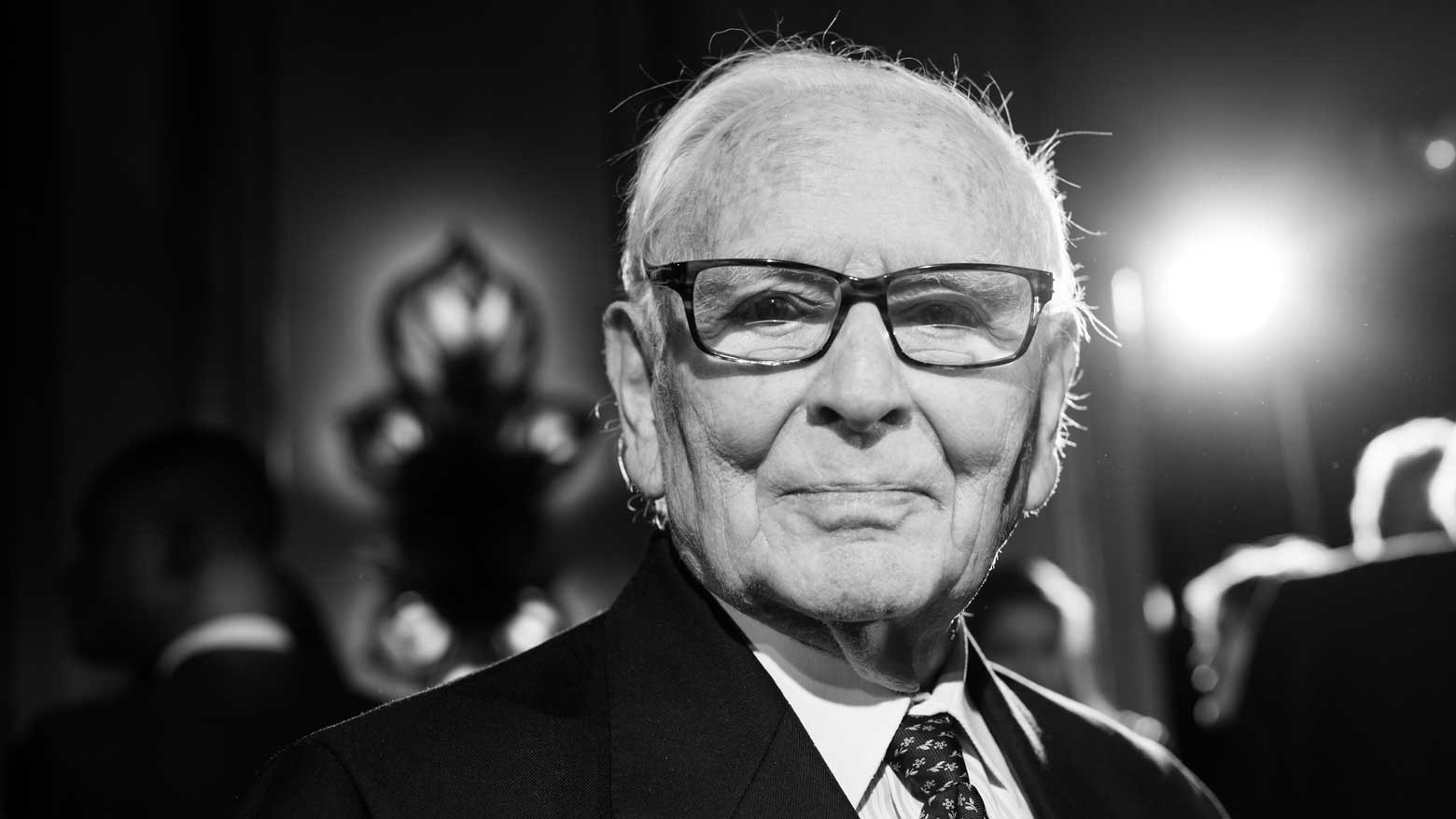Saito Naomi worked for Cardin as an interpreter about 40 years ago. She recalls a man who was strikingly frugal, in spite of the glamor that surrounded him.
“I remember Mr. Cardin once came down from his office with a pair of curtains and asked his assistant to have them altered for one of his relatives,” she says. “Though he was wealthy, he was very aware of recycling and thrift.”
Renée Taponier, who worked as Cardin’s assistant for about 60 years until his death, says the designer would never let a scrap of fabric go to waste.
“He was always careful. He was not someone who bought 10 spools of thread when he only needed two. It’s probably because he was from an Italian immigrant family that didn’t have much when they arrived in France.”
Cardin was born in Italy to a family that lost everything during World War One. They then fled Fascism, and settled in France, where Cardin later found a job as a tailor’s apprentice.
Clothing was his calling. After World War Two, his talents caught the attention of Christian Dior, who hired him as a tailor. In 1950, he decided it was time to set up his own shop.

Fashion for all women
Cardin rose to fame in what’s now regarded by many people as France’s golden age of fashion. The styles of the period were popularized on magazine covers and movie screens, but were accessible only to the upper crust of society.
Furthermore, most of the items were bespoke, made to order for models, film stars, and the wealthiest women in Paris. This didn’t sit right with Cardin, whose migrant background made him instinctively believe that fashion should be more affordable.
In 2019’s “House of Cardin,” a documentary about his life, the legendary designer explains his philosophy: “There are very few women who can afford millions of francs for a single dress. They should be available to lots of women, not just the rich and privileged.”
“He was one of the first to go in the direction of democratizing luxury ready-to-wear products. Many people criticized him because suddenly there were lots of products bearing his name,” recalls French designer Christophe Guillarmé. “But that was part of what made him visionary.”

Introducing western fashion to the world
Cardin didn’t stop at bringing Paris to the masses; he brought it to the world. In the late 1950s, he became the first major European designer to enter the Japanese market. Two decades later, he was blazing a trail again, selling in China and later the Soviet Union, earning fans with his pop-colored, space-age fashion.
Diversity in fashion
Cardin was also a pioneer in terms of the models he worked with. One of his most famous muses was Matsumoto Hiroko (1936-2003), who he met on a trip to Japan. He immediately asked her to come to Paris to work for him. According to her daughter Olivia Berghauer, Matsumoto deliberated for three years, but eventually found Cardin’s allure irresistible.
“She was very young and had to ask permission from her parents to move to Europe. She was already known in Japan, she had appeared in lots of different magazines as a model. I think her parents realized Cardin’s offer was one she couldn’t refuse, and so they gave her permission to go.”

Berghauer says Cardin’s work with her mother helped to stoke wider interest in Japanese culture.
“French people were captured by the refined beauty of Japanese culture through my mother.”
Cardin also hired black and male models back in the 1960s, decades before this was common practice.
To a younger generation
Cardin breathed new life into a staid and conservative fashion world. His styles remain relevant over fifty years later, with elements he introduced still popular on the runways of Paris. But Christophe Guillarmé says Cardin’s legacy is defined less by his space-age suits and dresses than by the countless designers he inspired with his spirit.
“Cardin taught us that if we have passion and really want to work in fashion, there will always be a place for us. There will always be a place for people who have something to say.”


